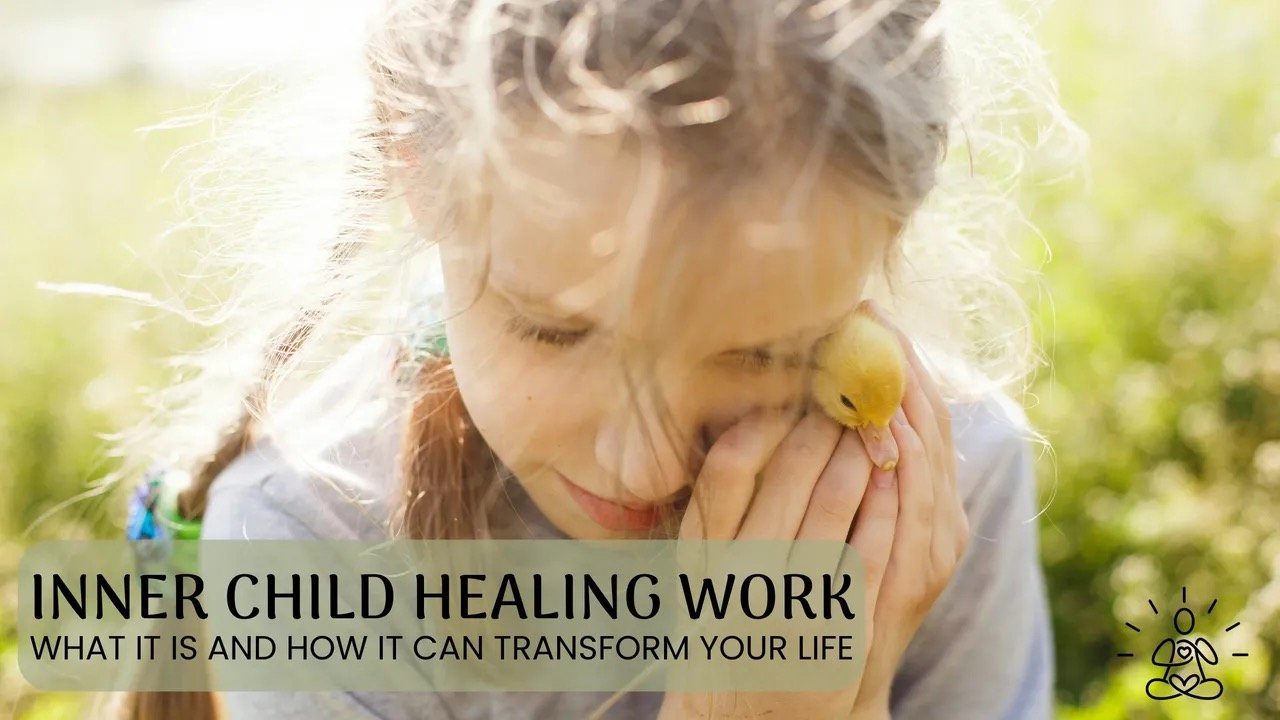Inner Child Work: What It is and How It Can Transform Your Life
In the journey of self-discovery and emotional healing, inner child work stands out as a powerful therapeutic approach. At its core, inner child work involves reconnecting with the younger version of yourself—your "inner child"—to address unmet needs, unresolved emotions, and lingering wounds from childhood. By acknowledging and nurturing this part of yourself, you can begin to heal old patterns and foster a deeper sense of self-compassion, resilience, and inner peace.
What Is Inner Child Work in Therapy?
Inner child work focuses on the younger, vulnerable aspects of your personality that may still carry unmet needs or unresolved pain. This therapeutic process provides a safe space to explore and validate these feelings, helping you reconnect with your authentic self.
Rather than dwelling on the past, this work is about uncovering patterns and beliefs formed during childhood that may still impact your emotional well-being today. It empowers you to nurture the parts of yourself that may have felt unseen, unheard, or unworthy.
Signs Your Inner Child Might Need Healing
Recognizing when your inner child needs attention can be an important first step. Signs include:
Recurring emotional triggers or overreactions to certain situations.
Struggles with perfectionism, fear of failure, or harsh self-criticism.
Difficulty setting boundaries or feeling guilty for prioritizing yourself.
Patterns of insecurity or unhealthy dynamics in relationships.
Persistent feelings of guilt, shame, or "not being good enough."
You avoid or find it hard to think about certain childhood memories or experiences.
If any of these resonate, it might be time to explore inner child healing as part of your emotional wellness journey.
Theoretical Foundations of Inner Child Work
Although not a standalone therapy model, inner child work integrates concepts from several established approaches:
Internal Family Systems (IFS): Focuses on understanding, healing, and integrating the younger, vulnerable parts of yourself, including your inner child, while fostering internal harmony and self-compassion.
Psychodynamic Therapy: Explores unconscious patterns and early childhood experiences that shape your current emotions and behaviors.
Attachment-Based Therapy: Addresses attachment wounds, helping individuals repair and heal the effects of insecure attachments formed in early relationships.
Humanistic Approaches: Encourages self-acceptance and personal growth by reconnecting with your authentic self.
Cognitive Behavioral Therapy (CBT): While often thought of as present-focused, CBT can include identifying core beliefs formed in childhood and replacing unhelpful ones with healthier perspectives.
This integrative approach allows therapists to tailor the work to each person’s unique needs.
What Issues Can Inner Child Work Address?
Inner child work is a versatile tool that can help with a wide range of emotional challenges, including:
Anxiety and Depression: Exploring the roots of distress can lead to greater emotional clarity and relief.
Low Self-Esteem: Reparenting your inner child helps rebuild self-worth and confidence.
Trauma and PTSD: Inner child work provides a safe way to process and release painful memories.
Relationship Challenges: Understanding how early patterns of connection affect your current relationships can lead to healthier interactions.
Perfectionism or Self-Criticism: Healing unmet childhood needs helps reduce harsh self-judgment and overachievement tendencies.
Inner Child Activity
One of the most widely used and impactful exercises in inner child work is letter writing. This activity fosters compassion and connection. Here’s one letter writing activity:
Writing a Letter to Your Younger Self:
Find a Quiet Space: Choose a peaceful environment for reflection.
Visualize Your Younger Self: Recall a specific age or time in your childhood when you felt misunderstood, lonely, or hurt. Visualize yourself at that age and try to connect with how you may have felt. (Pro tip: If you have a photo of yourself from that time, looking at it during this exercise can help deepen the connection.)
Start With Kindness: Begin with a caring greeting, like "Dear [Your Name as a Child]."
Acknowledge Their Feelings: Express empathy and validate their emotions, e.g., "I know you felt scared when..."
Provide Reassurance: Let your inner child know they are safe, loved, and worthy. Say things like, "You are enough just as you are," or "You are safe now."
Offer Support: Write about how you, as an adult, are here for them now. For instance, "I’ll always protect and care for you."
Close With Love: End with words of affection and encouragement, such as "I love you" or "You are never alone."
This activity helps bridge the gap between your past and present, allowing you to nurture and support the parts of yourself that may have felt unseen or unloved. Many clients find it to be an emotional but deeply healing process.
Taking the Next Step
Inner child work can transform how you view yourself, your relationships, and your emotional well-being. By addressing past wounds and fostering self-compassion, you can uncover hidden strengths and embrace your authentic self.
If this resonates with you, consider exploring this journey further with the support of a skilled therapist. At Graceful Mind Therapy, I provide a safe, supportive space for you to explore and heal at your own pace. Whether you’re struggling with anxiety, trauma, or self-doubt, we’ll work together to help you find lasting peace and growth.
Reach out today to take the first step toward healing and rediscovering your authentic self.
by Maria Perdomo-Torres, LCSW-S, MHA, CFSW



